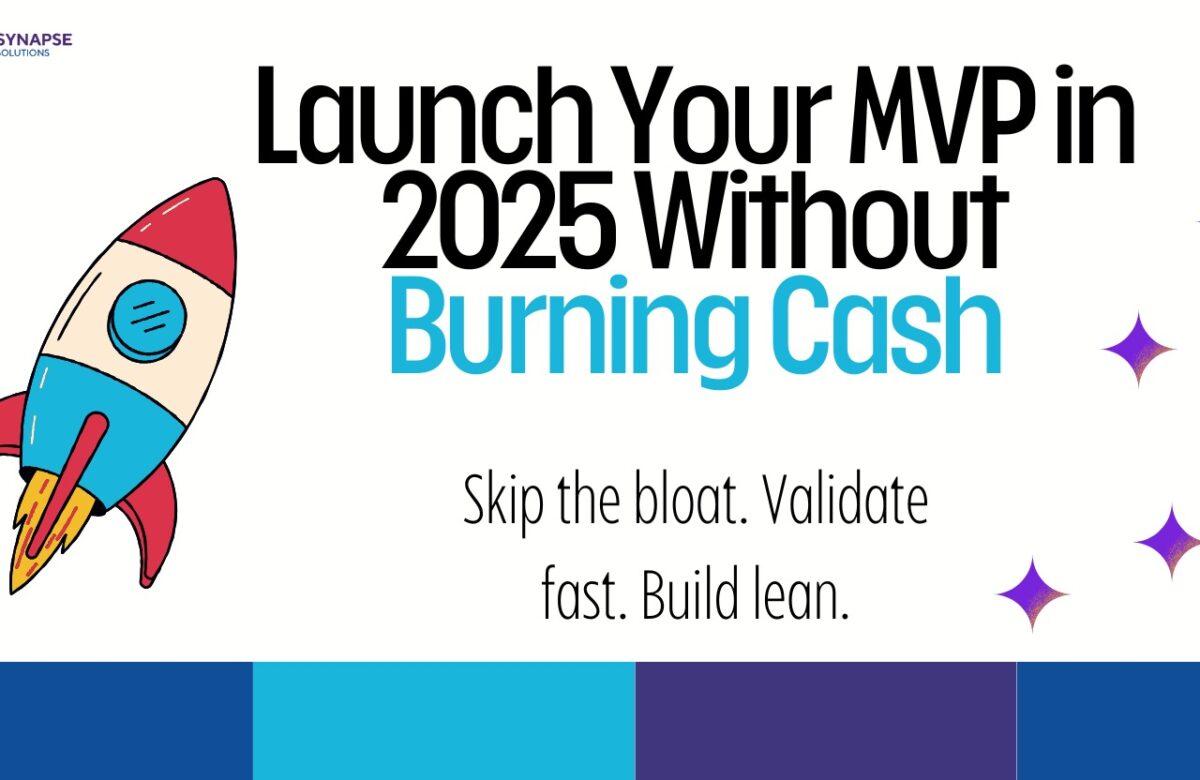How to Launch an MVP in 2025 Without Burning Cash
Know What an MVP Really Is (And Isn’t)
An MVP is not a prototype. It’s not a beta version. And it’s definitely not your dream product with half the features cut out.
An MVP is the simplest version of your product that delivers value and allows you to learn about your users.
It should do one thing well, and help you answer one core question: Does the market want this?
Don’t build:
– Fancy dashboards
– Custom animations
– Full admin panels
– Onboarding flows with 10 screens
Do build:
– Core functionality that solves one user pain
– A basic UI that gets the job done
– A clear way to collect user feedback
Validate Your Idea Without Writing a Line of Code
Before you hire a developer or open a code editor, validate that your idea is actually needed.
Talk to 10–15 potential users (not friends or family)
Ask them about their current pain points
Listen more than you speak
Avoid pitching—just understand their workflow
Then ask:
– “Would you pay for a tool that solves this?”
– “How are you solving this right now?”
– “What’s the biggest friction point in your current solution?”
If no one is struggling with the problem, stop here. Rework the idea.
Choose the Right Type of MVP
Not every MVP needs to be a functioning app.
MVP Types in 2025:
– Landing Page MVP: One-pager with signup button, no real product. ($50–$200, 1–2 days)
– Concierge MVP: Manually do what your product would automate.
– No-Code MVP: Built with tools like Bubble, Webflow. ($100–$500, 3–7 days)
– Figma Prototype: Clickable design mockups. (Free–$100, 1–3 days)
– WhatsApp/Telegram Bot: Chatbot for workflows. ($50–$150, 2–5 days)
– ChatGPT Plugin: Simulate product with AI prompts. (Free–$100, 1–2 days)
Use Lean Tech Stacks and No-Code Tools
You don’t need to build everything from scratch.
Backend:
– Firebase
– Supabase
– Xano
– Laravel + MySQL
Frontend/UI:
– Bubble
– Softr
– FlutterFlow
– Figma
Integrations:
– Zapier / Make
– Stripe / Razorpay
– Notion / Airtable
Hire Smart (or Not at All)
If you can DIY your MVP, do it.
If not, hire freelancers or a lean product studio.
What to outsource:
– UI/UX design (1–2 screens max)
– Frontend/backend setup
– Integrations
Set a strict scope. No feature creep.
Avoid the “Feature Fallacy”
More features ≠ better product.
Focus on:
– One target user
– One pain point
– One core feature
Examples:
– Uber MVP = book a ride only
– Dropbox MVP = video demo only
– Airbnb MVP = simple apartment listing
Get Feedback Immediately
As soon as your MVP is usable, show it to real users.
Ask:
– “Was this useful?”
– “Would you use this again?”
– “What would you pay for this?”
– “What almost made you not try this?”
Create a feedback loop with Typeform or WhatsApp.
Build the Waitlist or Audience Early
Start building your waitlist even before launch.
Use:
– Landing pages with “Join Waitlist”
– Share your journey on LinkedIn/X
– Offer early access or discounts
Keep Costs Under Control
A lean MVP in 2025 can be built for under $1000.
Suggested Budget:
– Domain & Hosting: $20–$50
– UI Design: $50–$150
– No-Code Tools: $0–$300
– Freelance Help: $200–$500
– Feedback Tools: Free–$50
Total: $300–$1000 or less
Know When to Kill, Pivot, or Scale
After launch, measure:
– Engagement (repeat usage)
– Willingness to pay
– Referrals or feature requests
If no traction: pivot or kill.
If yes: plan v2, improve UI, raise funds if needed.
Final Thoughts
MVPs in 2025 don’t need teams of 10 or $50k budgets.
Focus on:
– Clarity
– Speed
– Validation
At Synapse Tech Solution, we help founders build lean MVPs that get real feedback. Get in touch if you want to launch fast and smart.


